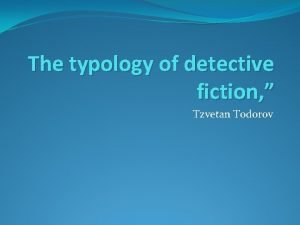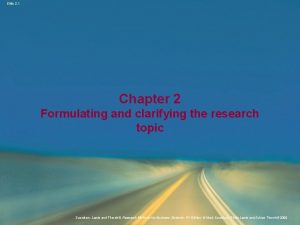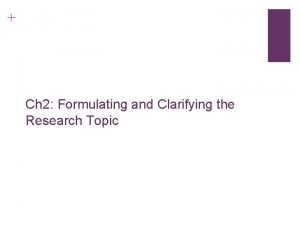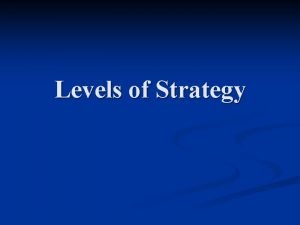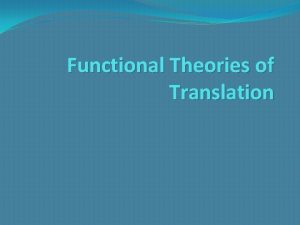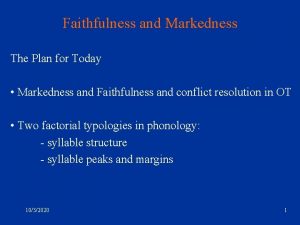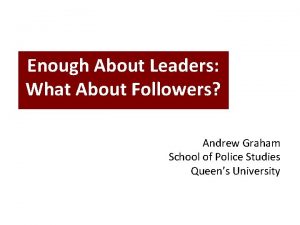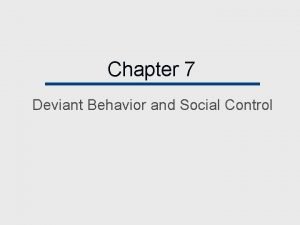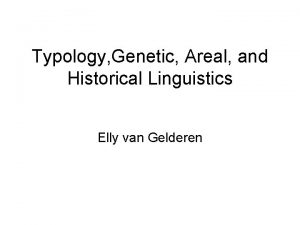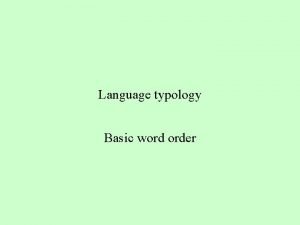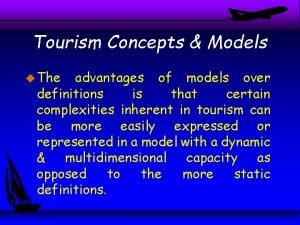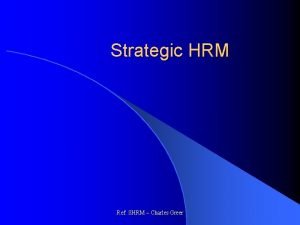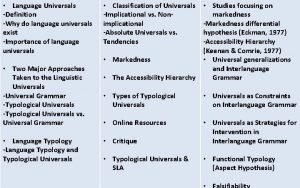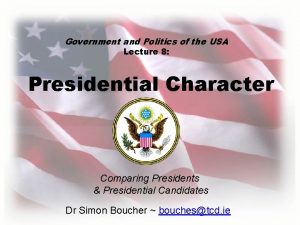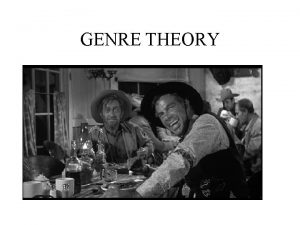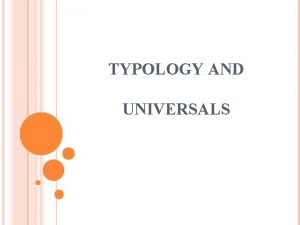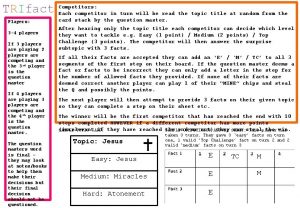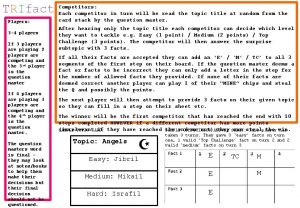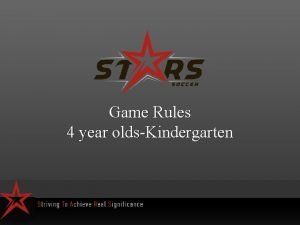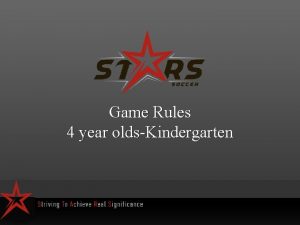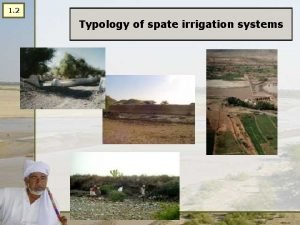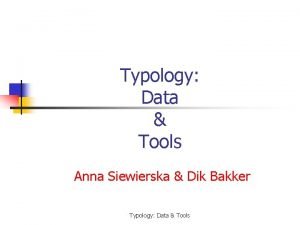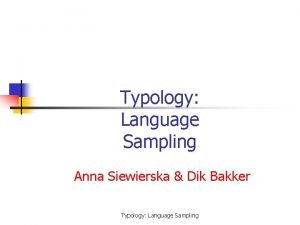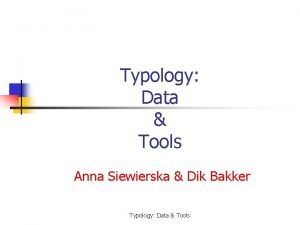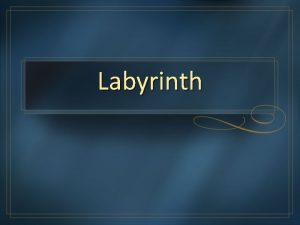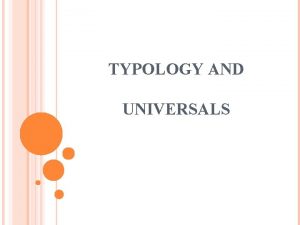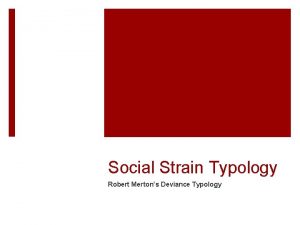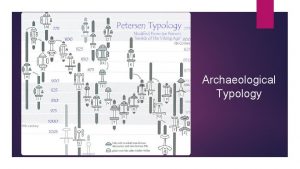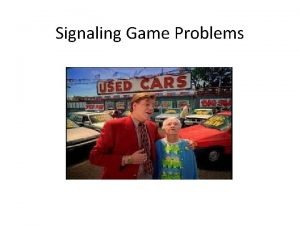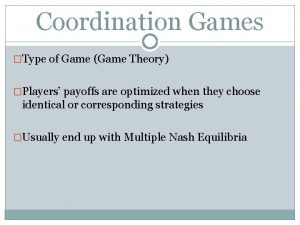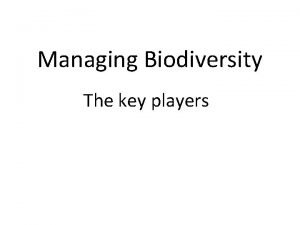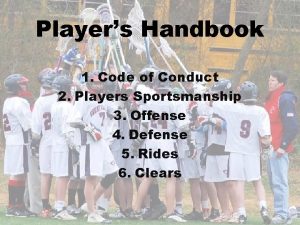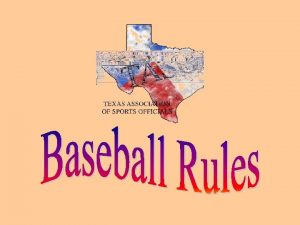A Typology of Players in the Game Physics






























- Slides: 30

A Typology of Players in the Game Physics Playground Stefan Slater < @datarefinery > Alex Bowers Valerie Shute Shimin Kai

Research Question How do we play games? Are there categorical differences in the motivations and goals that groups of players have when engaging with games?

Research Question We think about these motivations as typologies. Typologies attempt to group like-minded players together. This is not a new question…

Player Typologies – Bartle (1996)

Player Typologies – Bartle (1996) Achievers

Player Typologies – Bartle (1996) Explorers Achievers

Player Typologies – Bartle (1996) Explorers Achievers Socializers

Player Typologies – Bartle (1996) Achievers Explorers Socializers Killers

Player Typologies – Yee (2002) Grief • using other players Relationship • making friends online Achievement • attaining game goals Immersion • exploration and belonging Leadership • assertive and group-minded

Player Typologies – Drachen (2009) Veterans • fast completions, few hints Solvers • deliberate puzzle players Pacifists • frequent player deaths Runners • frequent death, fast completion

Player Typologies – Kahn (2015) Socializer Story-Driven Smarty-Pants Completionist Competitor Escapist

Player Typologies What we know: • There are few solid typologies between game contexts (e. g. achiever) • Some games likely do not support particular typologies (e. g. socializer in single player games) However…

Player Typologies Bartle (1996): “This is what players said they find fun on a forum. ” Yee (2002) and Kahn (2015): “This is what players reported on a questionnaire. ” Drachen (2006): “These are locations where players died or asked for help in the game. ”

Player Typologies We still don’t know what players are doing in games. • • What are they clicking on? Who are they playing with? Where are they going? How are they interacting with the medium?

Current Study Can we build a typology of players in the game Physics Playground, an educational physics game developed by Valerie Shute at FSU.

Current Study

Current Study Performance is tracked through badges. Players can see their total earned badges on the scoreboard.

Methodology Latent Class Analysis Similar to clustering, however (1) Assumes that a population is a heterogeneous mix of homogenous subgroups and (1) Tests for the differences between these hypothesized subgroups

Methodology Dataset: 138 unique players making ~ 6 million individual recorded actions All clicks that players made in game, and all calculations and metrics that the game performed.

Methodology We aggregated this data to produce a set of 9 variables: Gold Badge Freeform Drawings Level Starts Silver Badge Erase Events Level Restarts No Badge Machines Drawn Total Events C

Results Model AIC BIC -2 LL LMR Stat p Entropy C=2 3374. 38 3456. 34 1659. 19 193. 31 0. 0731 0. 933 C=3 3238. 84 3350. 07 1581. 42 152. 45 0. 1633 0. 856 C=4 3178. 18 3318. 68 1541. 09 79. 06 0. 4653 0. 889 C=5 3133. 59 3303. 37 1508. 79 63. 30 0. 5388 0. 911 C=6 3089. 52 3288. 57 1476. 76 62. 79 0. 4754 0. 923 C=7 3044. 47 3272. 79 1444. 23 63. 76 0. 3241 0. 916 C=8 3001. 67 3259. 27 1412. 83 62. 14 0. 7458 0. 923 C=9 2954. 37 3241. 24 1379. 18 66. 59 0. 5394 0. 927 C = 10 2925. 04 3241. 18 1354. 52 48. 81 0. 8057 0. 924 C = 11 2898. 14 3243. 56 1331. 07 46. 40 0. 3721 0. 925

Results Model AIC p Entropy C=2 0. 0731 0. 933 C=3 0. 1633 C = 10 C = 11 BIC -2 LL LMR Stat 3241. 18 2898. 14 1331. 07 46. 40

Results 3 Class Model • Achievers • Explorers • Disengagers

Results Achievers (n = 24) Disengagers (n = 44) Explorers (n = 70) Variable Mean S. E. p badgee 1. 766 0. 232 < 0. 001 -0. 518 0. 104 < 0. 001 -0. 239 0. 106 0. 024 badges 0. 447 0. 238 0. 060 -0. 905 0. 245 < 0. 001 0. 459 0. 198 0. 021 badgeg 1. 047 0. 373 0. 005 -0. 265 0. 098 0. 007 -0. 170 0. 102 0. 094 machines -0. 300 0. 136 0. 028 0. 076 0. 208 0. 715 0. 049 0. 122 0. 057 drawfree 0. 430 0. 256 0. 093 -0. 788 0. 250 0. 002 0. 386 0. 203 0. 017 -0. 236 0. 228 0. 301 -0. 618 0. 211 0. 003 0. 493 0. 208 0. 018 levstart 1. 679 0. 197 < 0. 001 -0. 876 0. 178 < 0. 001 0. 030 0. 143 0. 836 restart 0. 374 0. 297 0. 207 -0. 131 0. 248 0. 598 -0. 037 0. 171 0. 830 totevent 0. 460 0. 205 0. 024 -0. 814 0. 326 0. 013 0. 394 0. 165 0. 017 erase

Results Achievers (n = 24) Disengagers (n = 44) Explorers (n = 70) Variable Mean badgee 1. 766 -0. 518 -0. 239 -0. 905 0. 459 badges badgeg machines 1. 047 -0. 265 -0. 300 drawfree -0. 788 0. 386 erase -0. 618 0. 493 levstart 1. 679 -0. 876 0. 460 -0. 814 restart totevent 0. 394

Results

Discussion Moderate experimental support for a 3 class player typology Physics Playground players tend to be explorers, achievers, or disengaged (perhaps killers/socializers)

Limitations Sample size Existing vs. new typologies “The problem of employing a just-so model is that it becomes self -fulfilling. ” (Yee, 2002) These are typologies for “g” games only

Future Work More and higher-quality data – if you have some, please let us know! More diverse and varied game interaction possibilities Typologies over time – is there an “achiever” player, or do players wear different hats?

Questions and Thanks slater. research@gmail. com
 Typology
Typology Word order typology
Word order typology Group the words and word combinations
Group the words and word combinations Mass audiences
Mass audiences Typology
Typology The typology of detective fiction
The typology of detective fiction Econcern
Econcern Merton’s typology
Merton’s typology Threefold typology of theories
Threefold typology of theories Threefold typology of theories
Threefold typology of theories Groth's typology
Groth's typology Merton’s typology
Merton’s typology Operational level strategy
Operational level strategy Katharina reiss text types examples
Katharina reiss text types examples Typology
Typology Kellerman followership model
Kellerman followership model What are the types of information corpus
What are the types of information corpus Formal negative sanctions examples
Formal negative sanctions examples Genetic typology
Genetic typology Stephen schafer contribution to victimology
Stephen schafer contribution to victimology Thomas monroy dan robert folger
Thomas monroy dan robert folger \\\
\\\ Non good service adalah
Non good service adalah Acapulco typology
Acapulco typology Irridex
Irridex Typology of hr activities
Typology of hr activities Implicational language universals
Implicational language universals Barber's typology of presidential character
Barber's typology of presidential character Definition of genre theory
Definition of genre theory Typologies synonym
Typologies synonym Typology and universals
Typology and universals





